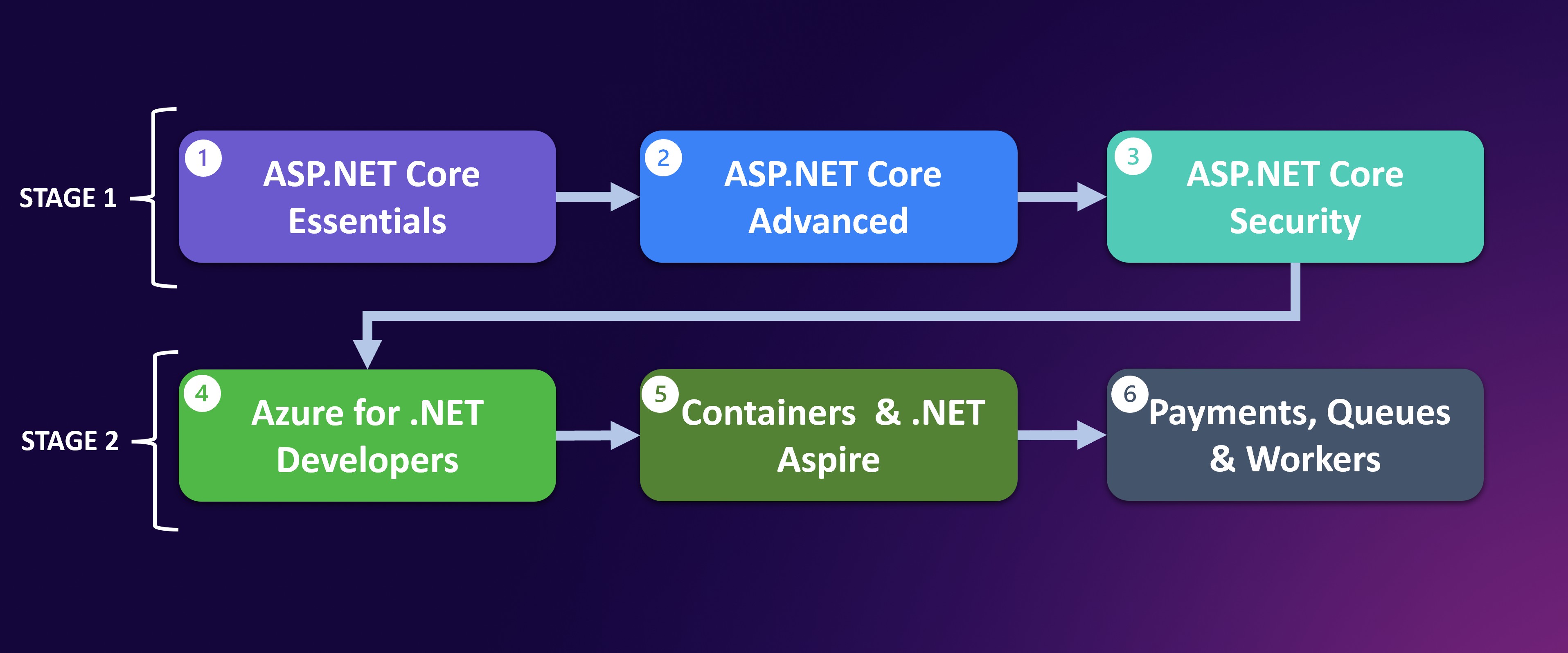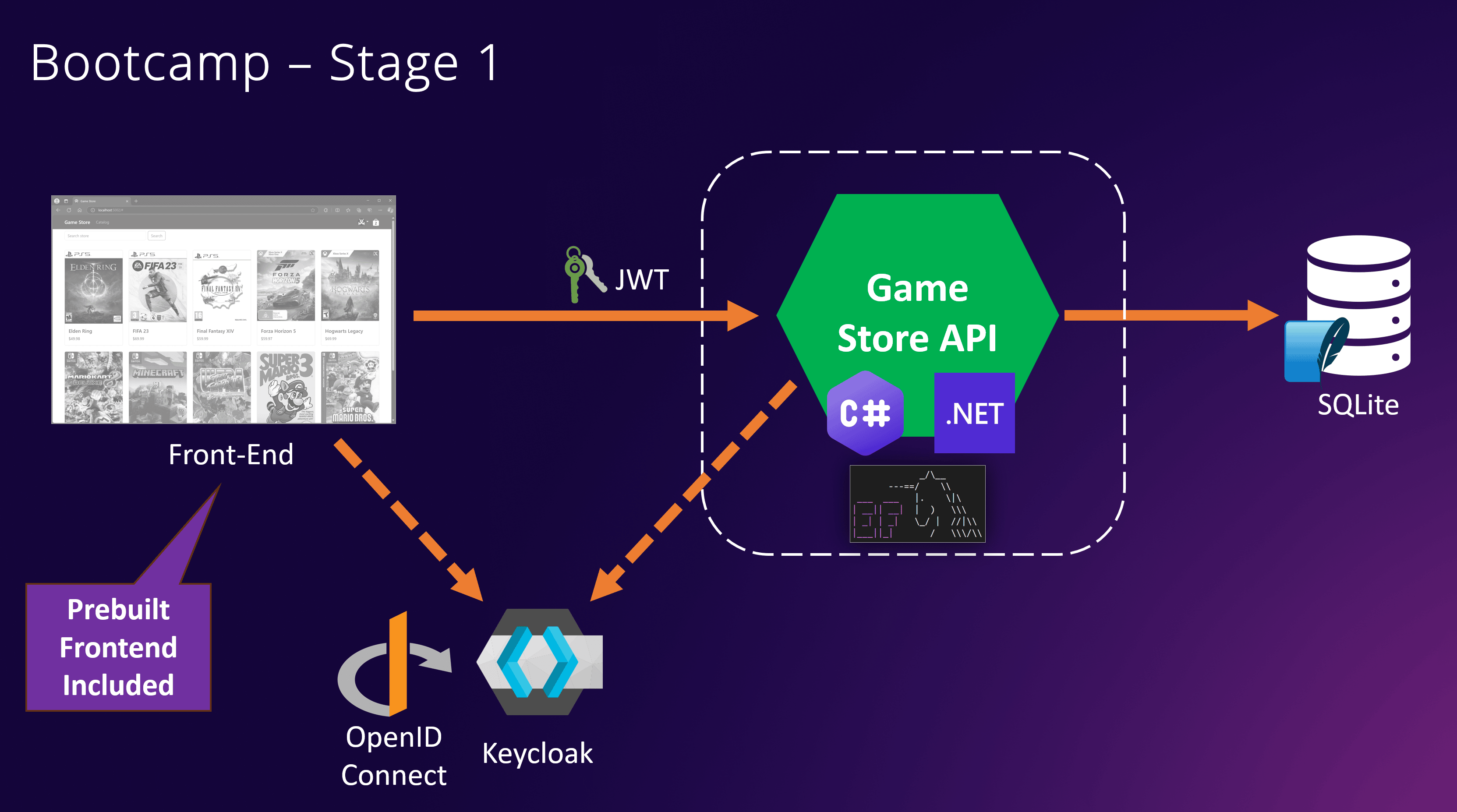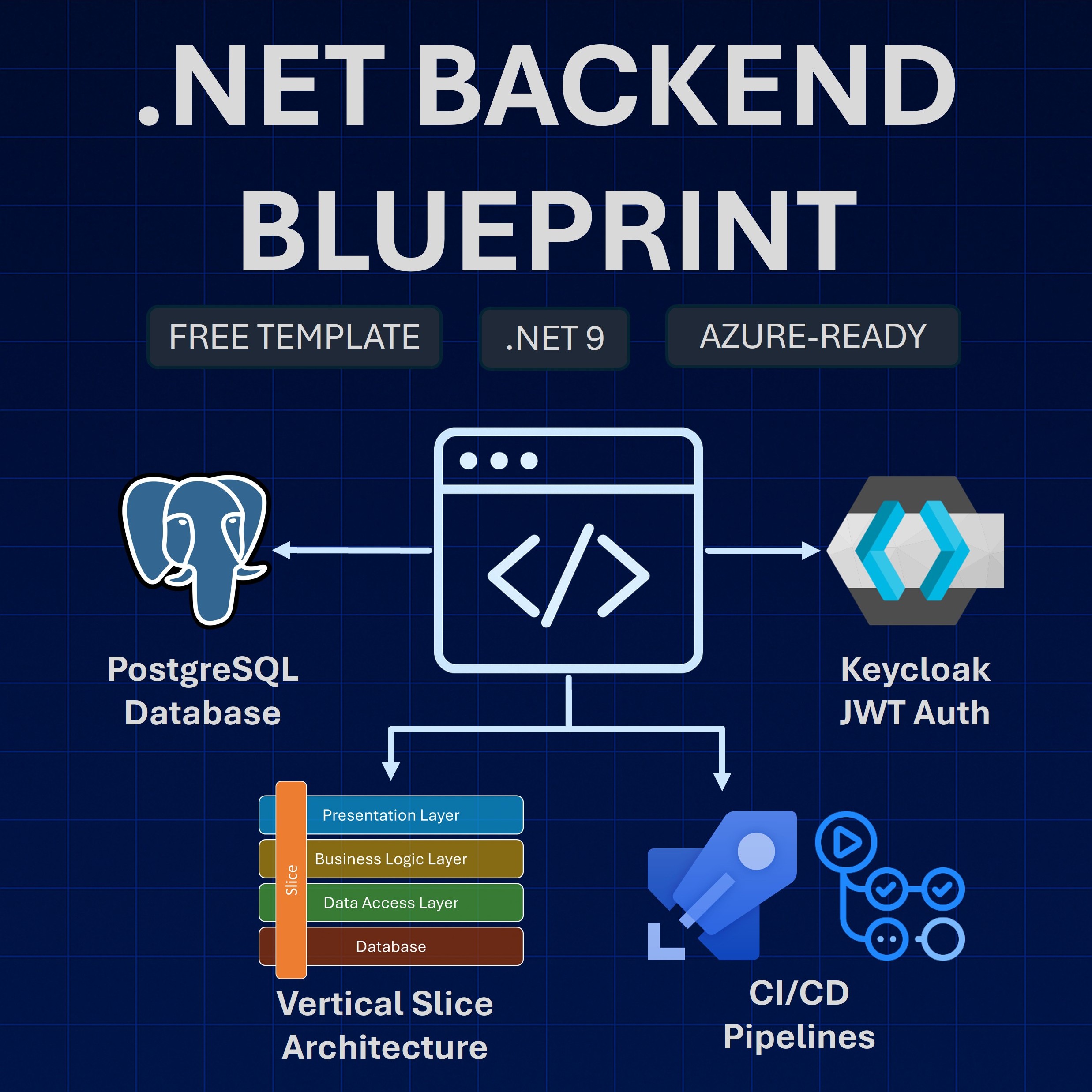Read time: 8 minutes
After a few hours of the usual dev machine prep and last-minute slide deck updates, the recording phase of the upcoming bootcamp is now going at full speed, with 4 modules of the first course all done, and 5 more modules to go.
Also, I’m usually too optimistic about release dates, so I took a small break today to create a proper release calendar for the first two courses (out of 6). The launch date is now all set and I’ll share all the details with you in next week’s newsletter.
But just so that you are well informed, I’ll dedicate this and the next 2 newsletters to give you all the details on how the bootcamp is structured, what you’ll build across the included 6 courses, pricing, and why this bootcamp is different than anything else out there.
Today I’ll start by going over the bootcamp structure and the application you’ll build on each stage.
Let’s dive in.

Bootcamp structure
The point of this bootcamp is to turn any C# developer into a senior .NET cloud developer. To get there, you need to cover a lot of ground, as I described here, so after several iterations, I landed on the following learning path:

Each stage includes 3 full courses that go from the absolute fundamentals to the more advanced topics that senior devs have to deal with on real-world projects.
Each course builds on what you learned in the previous one and also incrementally improves a single e-commerce application that you will build from scratch, step-by-step.
Now let’s go through what you will build and learn at each stage.
Stage 1: Master ASP.NET Core
ASP.NET Core is .NET’s Web platform and I believe the first step for any aspiring .NET Cloud developer is mastering this platform from the most fundamental building blocks to everything related to securing those web apps.

So in this stage, you will create your first ASP.NET Core backend API, from scratch, and you will end up with a fully working back-end that can securely provide data and services for a modern front-end.
I won’t go into the specific topics to be covered in each course here, but by the end of the 3 courses on this stage, you will know:
- How to implement a REST API with ASP.NET Core
- How to organize your code using Vertical Slice Architecture
- How to store data in a simple SQLite database via Entity Framework Core
- How to use middleware and handle errors globally
- How to do pagination and basic search
- How to allow uploading files to your backend
- How to enable authentication and authorization
- How to manage users and roles locally via Keycloak
- How to use OpenID Connect via Keycloak to secure your backend
I’m even including a mini crash course on Docker here for those of you new to the topic.
And, as will all my courses, I’ll include a pre-built front-end application that you can connect to your back-end to see the entire thing working end to end.
Even if you decide to not move forward with anything else in the bootcamp, at this point you are essentially a Junior .NET Backend developer, ready to take on any .NET backend development task.
Stage 2: The cloud
Stage 2 is my favorite since this is where your app becomes real by reaching a public cloud environment and integrating with multiple production-ready external services.

Specifically, the three courses in this stage will give you hands-on experience with:
- Using PostgreSQL as a production-ready database
- Managing users and securing your app via Entra ID (aka, Azure AD)
- Turning your app into a Docker image and deploying it to Azure Container Apps
- Using the new .NET Aspire stack for a simpler cloud development workflow
- Uploading files to Azure storage
- Using Key Vault and Managed Identities
- Using Infrastructure as Code (IaC) via Bicep
- Enabling payments via Stripe
It is incredibly exciting to see your app up and running in the cloud, and I believe that this is the point where you start transitioning from junior level to senior level since a cloud environment is a completely different beast than your local dev box, and there are many skills to master along the way.
So, at the end of this stage, you will be ready to build and contribute to most small to mid-size .NET monolithic apps out there.
What this bootcamp is not about
Because I know some of you will ask, and to set clear expectations, here are the things that will NOT be covered anywhere in the bootcamp:
- C# fundamentals
- Clean/hexagonal/onion architecture
- Modular monolith
- CQRS
- DDD
- MediatR
- AutoMapper
Out of all of those, the only thing you actually need for the job is some good C# fundamentals and there is already great free C# training out there.
I would have loved to also include some good GraphQL and gRPC content in the bootcamp, but could not make it. Maybe another time.
Your thoughts?
I would love to know of any feedback you might have on the topics I covered above.
Is there anything that you are really looking forward to learning across the bootcamp? Is there something you wish was included there and seems missing?
Please let me know!
Next week: the release schedule and how to purchase.
Until then!
Julio
Whenever you’re ready, there are 3 ways I can help you:
-
.NET Backend Developer Bootcamp: A complete path from ASP.NET Core fundamentals to building, containerizing, and deploying production-ready, cloud-native apps on Azure.
-
Building Microservices With .NET: Transform the way you build .NET systems at scale.
-
Get the full source code: Download the working project from this newsletter, grab exclusive course discounts, and join a private .NET community.
